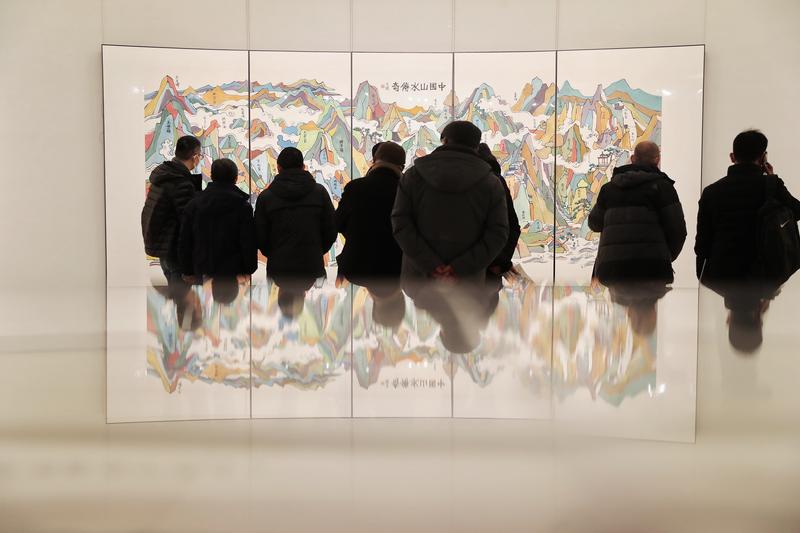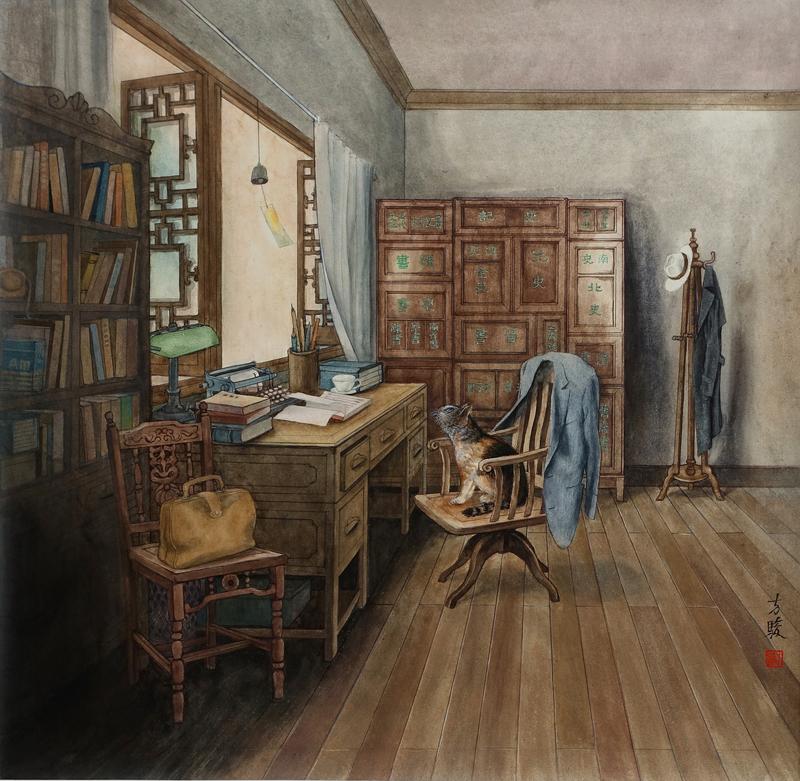Exhibited works of Fang Jun display his devoted research on classical Chinese painting, Lin Qi reports.
 Legendary Mountains of China, an ink work by Fang Jun, draws a crowd of viewers at the National Art Museum of China in Beijing. (JIANG DONG / CHINA DAILY)
Legendary Mountains of China, an ink work by Fang Jun, draws a crowd of viewers at the National Art Museum of China in Beijing. (JIANG DONG / CHINA DAILY)
Atmospheric poetry of the Song Dynasty (960-1271), considered a peak of Chinese literature, nurtured Fang Jun, the late ink artist and a former professor at Nanjing University of the Arts.
Fang, who specialized in classical Chinese landscape painting, created an output visualizing the feelings expressed in Song poetry, which is marked by elegance, splendor and a vivid imagery.
Jiangnan, or the lower reaches of the Yangtze River, where Fang grew up, lived and worked throughout his life, was another subject of creativity for him. The region, known for its scenery and prosperity, was where Song poetry and ink art thrived.
Fang followed in the footsteps of historic painters, consistently hailing the ever-changing beauty of Jiangnan in his work. Like the artists of ancient China, he accentuated a poetic sense to present varying views of nature, partially idealized, which still comforts viewers.
 Fang's works feature poetic and delicate brushstrokes. (PHOTO PROVIDED TO CHINA DAILY)
Fang's works feature poetic and delicate brushstrokes. (PHOTO PROVIDED TO CHINA DAILY)
An exhibition, titled Mountains in the Hometown, is now showing more than 200 landscape paintings from Fang's oeuvre. Being held at the National Art Museum of China through Wednesday, the show has an immersive feel to it.
Wu Weishan, director of the museum, who, like Fang, is a native of Jiangsu province, says that, in the paintings, people are able to build a connection with nature in the way of woyou ("traveling while lying down"), a term first used by ancient intellectuals to describe the experience brought by displaying landscape paintings in people's homes.
Also, through this intimacy with the scenery, partly realistic and partly imagined, one's mind is driven to the depths of history to conduct a dialogue with the master landscape painters who lived centuries ago, such as Dong Yuan, Zhao Mengfu and Dong Qichang, whose philosophical takes on the relationship between people and the universe are reinterpreted in Fang's delicate paintings and calligraphy strokes.
"And in his world of art, Fang was not confined to depicting the landscapes of Jiangsu or Jiangnan, his real hometown," Wu says. "His paintings take people even further, not only physically, but also to a land they desire in their dreams."
 Fang's works feature poetic and delicate brushstrokes. (PHOTO PROVIDED TO CHINA DAILY)
Fang's works feature poetic and delicate brushstrokes. (PHOTO PROVIDED TO CHINA DAILY)
Apart from Jiangnan landscapes, the exhibition shows Fang's depictions of northern Shaanxi province, shortened to Shanbei. The expansive view of Shanbei and its rich folk cultures under his soft, free lines become distinctively serene, gentle and far-reaching, like xintianyou, a local folk music style.
It also shows paintings drawn from Fang's three journeys to Europe-when he was traveling along the Danube. Among the works on show, the Danube series, which is in the collection of China National Academy of Painting, marks the historic exchanges between the East and the West.
Fang's paintings are the best testimony to his years of research on classical Chinese painting and folk arts. The colors he mainly used in his works are delicate, calming and often mentioned in Song poems.
"Light yellow and emerald green represent thriving lives in spring; dark green and blue reinforce a coolness of summer and the depths of far mountains; yellow and red dye the fields and leaves in the fall to deliver an extravagant feeling; silver white and pale green are for snow-covered woods to render the world in solemnity and desolation," Fang once said.
Contact the writer at linqi@chinadaily.com.cn


